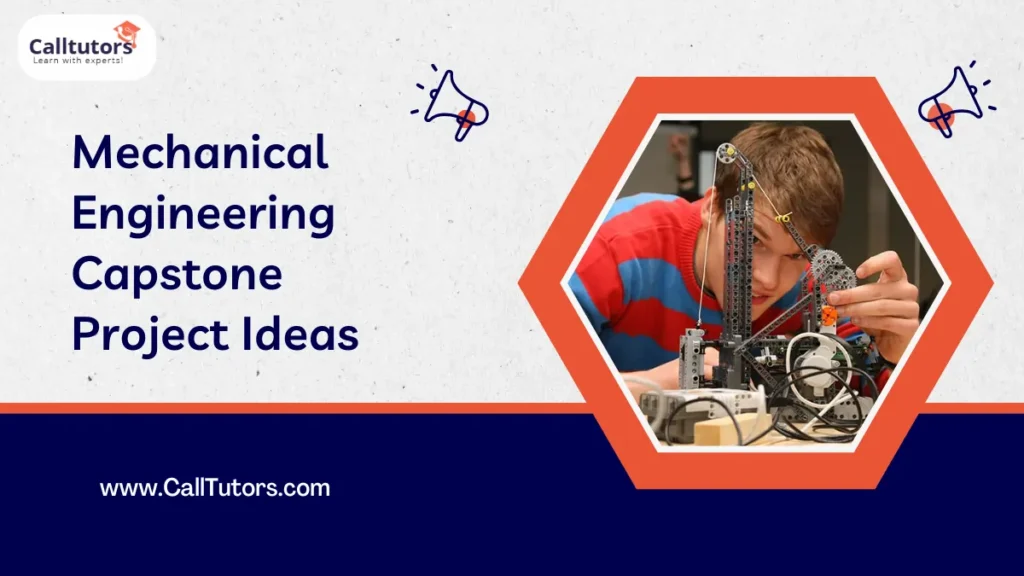Are you excited to learn about science? You’ve come to the right place! We have over 200 awesome science project ideas for students from 6th grade to college. We listed these science fair project ideas to cover everything from basic science to the latest discoveries.
We have something for you whether you love chemistry, biology, or physics. From simple experiments like making a volcano to advanced topics like artificial intelligence and quantum computing, there’s a lot to explore.
The best part? All our project ideas are completely free! You don’t need to give us any credit. Pick a topic and start experimenting. So, what are you waiting for? Dive in, get creative, and have fun exploring the world of science!
How To Choose Your Science Fair Project
Table of Contents
Starting a science fair project can feel tricky, but follow these simple steps to get going!
- Think about what interests you. Do you love food? Are you crazy about pets? Are you curious about soil? Look through this list for lots of cool ideas.
- Choose a topic or idea from the list.
- Brainstorm questions about your chosen topic. Check out Science Buddies for help with this.
- Turn your idea into a science fair project. According to Steve Spangler Science, there are three steps: first, change something about your idea; next, create a new experiment; and finally, compare the results!
- Use the scientific method for kids to ensure you cover all the important parts of your chosen science fair project.
Science Homework Challenges:
Science homework can be tough for students. It takes a lot of time and effort to do well. But why is it so hard? One reason is that students often lack the advanced science skills needed to get good grades.
Students can turn to the internet for help with this. Many websites offer science homework help. However, it can be difficult to find the best one among all the options. Some students end up choosing cheap services that don’t provide much help.
But now, students don’t have to waste time looking for help. They’ve come to the right place! Here, at Calltutors,we provide the best help to students whether they want homework or assignment help.
Award Winning Middle School Science Fair Project Ideas
Here are over 200 science fair project ideas, which is categorized by grade level as well as difficulty:
Moderate Level 6th-8th Grade Science Projects for Young Minds
- Which Bread Grows Mold Fastest?
- Potato Battery
- Rubber Egg (Soaking in Vinegar)
- Crystalizing Rock Candy
- Effects of Music on Plant Growth
- Baking Soda and Cabbage Juice Acid Test
- Build a Microscope
- Paper Airplane Distance Competition
- Extracting Strawberry DNA
- Does Temperature Affect a Magnet’s Strength?
- Testing Soap Boat Catalysts
- Liquid Density Column
- Solar Bag Cooker
- Yeast Balloon Experiment
- Build a Robot Gripper
- Aluminum and Copper Salt Electrolysis
- Make a Seismograph
- Vegetable Battery
- Wick Test for Absorbency
- Magic Balloon
6th-8th Grade – Hard Projects for Curious Minds
- Which Liquids Conduct Electricity Best?
- Maglev Train
- Enzyme Action on Hydrogen Peroxide
- Extracting Iron from Cereals
- Building a Hovercraft
- Underwater Volcano
- Build a Robotic Arm
- Construct a Geodesic Dome
- Make Rain by Cloud Seeding
- Rubber Bone Synthesis
- Extract Aluminum from Foil
- Soda Can Crusher
- Rocket Propulsion Science
- Build an Air Purifier
- Grow Stalactites and Stalagmites
- Extract Iron from Breakfast Cereal
- Design and Build a Kite
- Burglar Alarm using Laser Light
- Paper Battery
- Build a Model Roller Coaster
- High School Projects
9th-10th Grade – Easy Science Fair Project Ideas
- Castic Milk: Polymer from Milk and Vinegar
- Copper Plating Iron Nails
- Microwave a Grapefruit
- Viscosity of Liquids
- Floating Egg: Density
- Alka-Seltzer Lava Lamp
- Colors from Chemistry
- Chromatography of Markers
- Cabbage Chemistry
- Balloon-Powered Car
- Cartesian Diver
- Water Purification Methods
- Rainbow Paper Chromatography
- Electromagnet Strength Test
- Grow Mold on Bread
- Test Bubble Solution Viscosity
- Rust-Prevention Methods
- Hand Boiler
- Test Paper Towel Absorbency
- Red Cabbage pH Indicator
9th-10th Grade – Moderate Level Project Ideas
- Mold Growth under Different Conditions
- Which Materials Insulate Best?
- Make a Geodesic Dome
- Chemical Round-Up: Household Liquids
- Organic Battery from Quarters/Potatoes
- Oil Spill Clean-Up Methods
- Solar-Powered Cooler
- Plant Propagation Techniques
- What Soil Grows Plants Best?
- Cornstarch Non-Newtonian Fluid
- Build a Wind Turbine
- Aluminum and Copper Salt Electrolysis
- Sticky Liquid Desiccant
- Build an Electromagnetic Crane
- Extract Iron from Cereal
- Bristlebot
- Soda Can Crusher
- Design and Build a Water Filter
- Effects of Acid Rain on Seed Growth
- Build a Hydraulic Arm
9th-10th Grade – Challenging Science Fair Project Ideas
- Testing Moisture-Wicking Fabrics
- Build a Robot Arm or Gripper
- Extract Aluminum from Aluminum Foil
- Build and Test a Fuel Cell
- Construct a Huffky Model Hovercraft
- Rust Prevention Methods
- Green Gasoline from Plastics
- Maglev Wind Turbine
- Build a Matchstick Tesla Coil
- Electroplate Metal Coatings
- Design/3D Print a Robotic Arm
- Titanium Extraction from Minerals
- Machine Learning for Handwriting
- Nanocrystal Formation
- Quantum Cryptography
- Biofuel from Algae
- Piezoelectric Shoe-Harvest Energy
- Build an Automated Gardening System
- Extract Aluminum from Clay
- Novel Approaches to Water Purification
11th-12th Grade – Easy Level Science Fair Project Ideas
- Liquid Density Column
- Rubber Chicken Polymer Synthesis
- Rocket Balloon Car
- Lava Lamp
- Wick Test for Fabric Absorbency
- Rainbow Density Column
- String Telephone
- Non-Newtonian Oobleck
- Crystal Growth
- Build a Rain Gauge
- Jurassic Dried Egg
- Magic Milk Experiment
- Solar Balloon
- Grow Salt Crystals
- Implode a Can with a Vacuum
- Elephant’s Toothpaste
- Cabbage Chemistry
- Peregrine Egg Drop
- Penny Battery
- Hot Ice Experiment
11th-12th Grade – Moderate Science Fair Project Ideas
- Magnetic Slime or Putty
- Analyze Which Pen Ink Fades Fastest
- Build a Barometer
- Rust Removal Methods Compared
- Passive Solar Space Heating
- Electrolyte Challenge: Test Sports Drinks
- Design an Aerodynamic Ski Jacket
- Build a Matchstick Bridge
- Build an Air Cannon
- Organic Detox Drink Analysis
- Green Roof Temperature Comparison
- Which Paper is Most Opaque?
- Piezoelectric Energy Harvesting
- Build a Rubber Band Shooter
- Ferrofluid Magnetic Liquid
- Design a Water Purifier
- Build a Stirling Engine
- Extract Salt from Seawater
- Heliostat Solar Tracking
- Compare Soap Engines
11th-12th Grade – Hard Science Fair Project Ideas
- Build a Matchstick Tesla Coil
- Electroplate a Durable Coating onto Metal
- Design and 3D Print a Robotic Arm
- Extract Aluminum from Bauxite Ore
- Optimize a Potato Battery
- Silicon Extraction from Sand
- Hydroponics vs Soil Plant Growth
- Quantum Computing Project
- Machine Learning for Image Recognition
- Design Metamaterials
- Build a Free Energy Device
- Nuclear Fusion Reactor
- Biogas Generator from Food Waste
- Novel Graphene Supercapacitors
- Carbon Nanotube Actuators and Muscles
- Origami Engineering Design
- Perpetual Motion Debunked
- Cold Fusion Experiment
- Orbital 3D Printed Renewable Shelters
- Blockchain for Scientific Data Integrity
College-Level Science Fair Project Ideas That You Can Try
- Build a Free Energy Device
- Novel Approaches to Water Purification
- Metamaterials Design and Testing
- Machine Learning for Image Recognition
- Quantum Computing Project
- Nuclear Fusion Reactor
- Biogas Generator from Food Waste
- Novel Graphene Supercapacitors
- Carbon Nanotube Artificial Muscles
- Origami Engineering Structures
- Perpetual Motion Machine (Debunking)
- Cold Fusion Experiment
- 3D Printed Renewable Housing
- Blockchain for Scientific Data Integrity
- Artificial Photosynthesis Device
- Muon-Catalyzed Fusion Experiment
- Aerogel Insulation and Applications
- Thorium Molten Salt Reactor Design
- Bose-Einstein Condensate Experiments
- Gravitational Wave Detector
- Biohybrid Cyborg Design
- Programmable Matter and Claytronics
- Space-Based Solar Power Systems
- Alcubierre Warp Drive (Theoretical)
- Artificial General Intelligence
- Molecular Nanotechnology Assemblers
- Orbital 3D Printed Constructors
- Antimatter Production and Storage
- High Temperature Superconductors
- Room Temperature Superconductivity
- Generative Adversarial Networks
- Negative Mass/Exotic Matter Research
- Nuclear Isomer Energy Storage
- Compact Muon Solenoid Detector
- Wormhole Physics and Engineering
- Practical Teleportation Experiments
- Autonomous Self-Replicating Robots
- DNA Digital Data Storage Systems
- Induced Gamma Ray Emission Research
- Hyper-Efficient Photovoltaic Cells
Once you’ve chosen your favorite science fair project idea, you might wonder how to present it. Don’t worry; we’ve got you covered! Below, we’ll outline how you can effectively present your science fair project.
How To Present Your Science Fair Project
- Clear Organization: Arrange your project neatly with clear headings and sections. Use simple language and bullet points to highlight important findings.
- Visual Aids: Show your experiment and results using graphs, charts, and diagrams. Make sure they’re easy to read and well-explained.
- Eye-catching Display: Create an attractive and organized display board. Use bright colors and images to grab attention.
- Interactive Parts: Add models, demos, or samples to involve judges and viewers. Let them interact with your project.
- Practice: Practice your presentation several times to be clear and confident. Be ready to explain everything and answer questions.
- Explain Impact: Show why your findings matter and how they add to science. Talk about any real-life uses or results.
- Professionalism: Dress nicely and be polite and enthusiastic. Treat judges and visitors with respect.
- Feedback: Be open to suggestions from judges and viewers. Use their advice to make your project better.
- Documentation: Provide detailed information about your experiment, including what you did and what you found. Offer extra resources for more details.
- Show Passion: Let your love for science and your project shine. Be excited when you present so people remember you.
FAQs
What are successful projects?
Successful projects are those that are completed on time, within budget, and according to the established scope outlined in the project documents. To fully grasp what defines a successful project, it’s important to define the specific meanings of cost, scope, and time beyond their general interpretations.
What is the biggest science project ever?
The biggest science project ever is the famous Pitch-Drop experiment, which holds the Guinness World Record for being the longest-running experiment in history. This experiment is still ongoing today. Essentially, pitch is a viscoelastic polymer derived from plants, petroleum, or coal tar.



